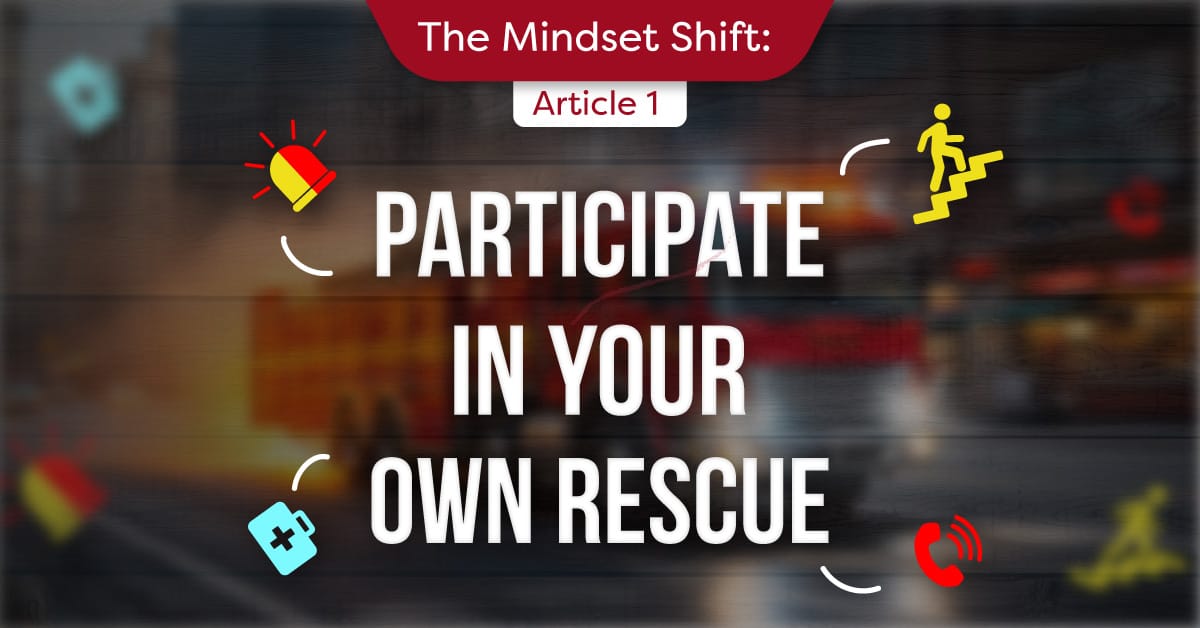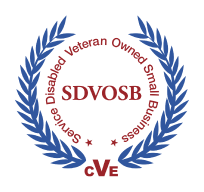How to buy life-saving minutes before responders arrive, with simple habits and training
Contributed by Jim Brigham, LCG VP of Risk Management, Former Operations Chief, State of Vermont, Office of Safety & Security
Series context. This installment opens a practical series on personal and organizational readiness, focused on the gap between the start of an incident and the arrival of professional responders. Findings from national studies and local data show that critical events often end before police or EMS can intervene, shifting the initial burden of action to ordinary people. [1][2]
The first five minutes decide outcomes.
A stubborn fact emerges from every credible dataset on emergencies, violent incidents, and medical crises. Events unfold faster than help can arrive. The Federal Bureau of Investigation’s study of active shooter incidents from 2000 through 2013 found that almost 70 percent ended within five minutes, and about 60 percent concluded before law enforcement engaged the attacker. Those numbers do not imply failure by police; they show the tempo of real-world violence. [1]
The response time picture is just as unforgiving for medical emergencies and other high-priority calls. Federal victimization tables show that in violent crime incidents where police were called, arrival commonly occurred in more than five minutes, and a significant share of responses landed between six and ten minutes, or longer. The distribution is not an indictment of any agency; it reflects geography, call loads, and staffing across the country. [2] National discussions and summaries routinely cite average emergency response times around eight to eleven minutes in urban environments, with rural settings stretching to thirty minutes or more, because travel distance and lower density of units dominate the physics of response. [3][4] City-by-city snapshots illustrate the spread: some municipalities report averages around six to seven minutes, others report twenty minutes or more. [5]
What do those averages mean for you in the moment that matters? They mean that the clock you can influence is the first three to five minutes after an incident starts. That is the window in which a person with a severe arterial bleed may die, unless someone nearby controls it. That is the window in which a collapsed coworker either receives chest compressions and defibrillation that double or triple their odds of survival or does not. That is the window in which people in the path of an attacker either gain time and distance, barricade a door, or remain exposed. [11][12]
The regional picture brings the point even closer to home. In northern New England, the contrast between small cities and vast rural areas is stark. Burlington, Vermont, triages calls through a Priority Response Plan that directs limited staffing to the most urgent incidents first. That is smart policy; it also means that lower-priority calls are held when resources are pinned to life-threatening events. [6][8] Burlington’s annual reporting describes the interplay of call volume, staffing, and capability, and those same structural realities appear across the region. [7] Vermont’s own EMS reporting has documented on-scene response times that vary by district, with averages that make sense when you consider the distances troopers, firefighters, and EMTs must cover. [9][10] None of this is a criticism of dedicated professionals. It is the operational truth of living in communities where resources are finite and geography is large.
The lesson is not to panic; it is to adjust the mindset. The first few minutes of a crisis belong to you, your family, your coworkers, and any other bystanders who are present. That is not a slogan. It is a risk reality that should drive how you prepare, how you move, and what you practice. The goal is simple: buy time, reduce harm, and hand a better scene to the professionals when they arrive. [1][2][11][12]
LCG perspective. The most effective way to lower risk in those first minutes is to reduce the decisions you must make under stress. Train a few essential skills, pre-stage a few simple tools, and rehearse short scripts for how you will act. When the moment comes, you will not rise to the occasion; you will fall to the level of your preparation.
What changed, and why it matters
Many people grew up believing that “call 911” transfers responsibility to trained responders. It certainly starts the response; however, it does not remove the need for immediate action on the scene. As the FBI data shows for violent incidents, the event may be over before officers arrive, for better or worse. [1] As the medical literature and national campaigns highlight, survival in cardiac arrest and severe bleeding is determined early, then improved or worsened by the quality of bystander actions. [11][12]
Urbanization brings crowds and complexity, which can slow access. Rural life brings distance, which creates travel time. Staffing levels in many jurisdictions are tight, which forces triage. Agencies make rational scheduling decisions that allocate scarce people to the highest-value problems first. The result is a rational system that still cannot be everywhere at once. [2][6][7][8]
For organizations, there is a second change. Duty of care standards and the expectations of employees and visitors now include visible preparedness. People notice when workplaces teach Stop the Bleed, stock trauma kits with tourniquets and chest seals, maintain AEDs, and post clear emergency instructions. They also notice when those basics are missing. The legal standards around negligent security and premises liability vary by jurisdiction, yet the reputational standard is consistent. In high-consequence events, leaders will be asked, “What did you do to prepare your people for the minutes before responders arrived?” Having a credible answer, backed by training records and equipment checks, is both the right thing and the defensible thing. [11][12]
The five-minute playbook: what to do before help arrives
The following playbook translates evidence-based guidance into short, repeatable actions. It is not a substitute for formal training; it is a bridge between now and your next class. The focus is on the first five minutes.
- See the problem early, create time and distance. If something feels wrong, move. If the threat is a person, create space, break the line of sight, close and lock doors, and put large objects between you and the hazard. Time and distance reduce exposure and improve survival. [1]
- Call 911 fast, then put the phone down on speaker. Speak plainly and give the location, nature of the emergency, and what you are doing now. If you must leave, leave the line open so telecommunicators can hear what is happening. Early, accurate information helps responders choose the right resources. [2]
- Control life-threatening bleeding. Apply direct pressure with both hands, high and tight. If the bleed is from an arm or leg and is not controlled by pressure, apply a tourniquet above the wound and tighten until bleeding stops. Write down or remember the time. This is the core of the national Stop the Bleed program for lay responders, and it saves lives in the three- to five-minute window when blood loss can be fatal. [11]
- Open the airway and deliver chest compressions when needed. If a person is unresponsive and not breathing normally, begin hard, fast chest compressions in the center of the chest, at a rate of 100 to 120 per minute. Send someone to retrieve the nearest AED, turn it on, and follow the prompts. Immediate bystander CPR, coupled with early defibrillation, can double or triple chances of survival. [12]
- Stage the space for responders. Unlock entry doors, send a person to guide arriving units, clear a path to the injured, and shut off alarms that do not add safety. These simple steps can save responders precious seconds, and seconds are what we are trying to buy.
- Use plain words with the people around you. Short, direct instructions calm a scene. Say, “You call 911,” “You get the AED,” “You bring the first aid kit,” “Everyone else, help me press here,” and “Close that door, stay low, stay quiet.” Clear language beats complex plans in the first minutes.
- Document what you do, as you do it. Note the time of the call, the time of the tourniquet, the time the AED advised a shock, the medications administered if applicable, and any description of the assailant or hazard. This helps EMS make clinical decisions, and it helps law enforcement reconstruct events. [6][7]
- Do not guess about safety equipment; practice with it now. If your building has AEDs, trauma kits, and emergency radios, find them today, and learn how to open them. You will not have time to figure it out later.
- After the event, expect cascading needs. Once the immediate hazard is controlled or responders arrive, reunification, family notifications, media coverage, and investigations will follow. Your early notes and your ability to account for people will matter. Even in minor incidents, that discipline helps your organization recover.
These actions are simple on purpose. They reflect the reality that you will be stressed, your hands may shake, and you may have to act in the presence of danger. The playbook focuses on predictable causes of preventable death, severe bleeding, and sudden cardiac arrest, and on the simple movement and communication steps that reduce exposure to a continuing threat. [1][11][12]
LCG perspective. The only equipment you must have is knowledge, and the only script you must memorize is a few clear sentences. Everything else is a helpful bonus. Put tourniquets and AEDs where people actually are, near lobbies, cafeterias, loading docks, and conference rooms, then train the workforce to use them.
A regional lens: what Vermont teaches about readiness
Vermont’s mixed urban and rural profile makes it a useful case study. Burlington’s Priority Response Plan codifies how a city triages scarce resources toward life-threatening incidents. That clarity is a strength because callers know that a non-emergency may be held while officers address a robbery in progress or a violent domestic assault. The public reporting that accompanied the plan explains the logic: to preserve speed in crises where minutes matter. [6][8] Burlington’s annual report discusses staffing and call volume, two levers that determine how many units are in service and how quickly they can reach you. [7]
Beyond the city limits, troopers and EMTs cover large distances, and they do so in all seasons. The Vermont EMS Advisory Committee’s report to the Legislature and the 2023 regional coordination study show that average time intervals from notification to on-scene vary across districts. The variation is not surprising when you picture winding roads, long driveways, winter conditions, and a limited number of units moving across several towns. Rural life offers safety in many ways; it cannot change the map. [9][10]
For residents, the regional lesson is straightforward. If you live or work in a rural area, you have more control over the timeline. For leaders, the lesson is to pair simple training with pre-staged equipment and to communicate response realities without fear. Communities respond well to honest expectations. When people understand that help is coming and that their actions matter before it arrives, they rise to the moment. [9][10][11][12]
Building a sustainable program: from individual skill to organizational habit
Individuals can prepare, and organizations can make that preparation normal. The objective is not to create a force of amateur paramedics or tactical teams; it is to normalize a handful of high-value behaviors and make equipment readily accessible. The following approach scales from a small office to a campus.
- Adopt a short list of competencies. Choose Stop the Bleed for bleeding control, and basic CPR/AED for cardiac arrest. These two skills address the most time-critical medical killers; they are designed for laypeople, and national curricula support them. Schedule recurring classes, aim for coverage across all shifts, and track completion. [11][12]
- Place equipment where people are, and where incidents start. AEDs should be visible and evenly distributed so that any unit is reachable within three minutes round-trip. Trauma kits should be co-located with AEDs in lobby areas, near security stations, and in vehicles that regularly leave the building. Post simple instruction cards next to each device. Commit to monthly visual checks and documented annual maintenance. [11][12]
- Write two pages of guidance, not fifty. Publish a plain-language procedure that says what to do in the first five minutes of a violent incident, a medical emergency, a fire, or a hazardous release. Use short verbs and assign roles. Include a checklist for managers to run in the background while bystanders act. Practice those pages twice a year.
- Coordinate with local responders before you need them. Invite police, fire, and EMS to walk your site. Ask for advice on access points, staging areas, and special hazards. Share floor plans. Provide after-hours contact information. When an incident occurs, that familiarity saves time.
- Communicate expectations and normalize participation. During onboarding and safety briefings, tell people plainly that they may be the help until help arrives, and that modest preparation is both encouraged and supported. People respond positively when leaders state expectations with respect. [11][12]
- Use real data in your planning. If your city publishes response time distributions, study them. If your state EMS office posts regional times, read them. The point is not to criticize; it is to anchor your plan in the environment you actually inhabit. Data makes conversations with executives and boards easier by explaining why you invest in training and equipment. [6][7][9][10]
- Care for people after the event. Traumatic incidents produce psychological stress. Offer immediate support, make space for people to process what happened, and ensure that any investigation respects the fact that bystanders acted to save lives. Align your communications with those values. Survivors remember how leaders behaved.
A program built on these elements is not complicated. It is, however, deliberate. It teaches people to buy time, to reduce harm, and to hand a better scene to the responders who will take over.
Quick Checklist
- Train two skills, Stop the Bleed and CPR/AED, and refresh them on a set schedule.
- Place AEDs and trauma kits where people are and check them monthly.
- Practice a two-page first five-minute plan and tell your people that their actions matter. [11][12]
Final thought
Participating in your own rescue is not a critique of first responders; it is a compliment to them. The more you do well in the first few minutes, the more they can do when they arrive. The mindset shift is simple: Own the seconds you can control. The practical steps are simple, too: learn a couple of skills, stage a few tools, and rehearse how you will act. The reward is measured in lives saved, injuries reduced, and communities that refuse to be passive in the face of danger. You are the help until help arrives, and with modest preparation, you will be ready to prove it. [1][11][12]
References (endnotes)
[1] Federal Bureau of Investigation. A Study of Active Shooter Incidents in the United States Between 2000 and 2013. U.S. Department of Justice, September 2014. https://www.fbi.gov/file-repository/active-shooter-study-2000-2013.pdf
[2] Bureau of Justice Statistics. Criminal Victimization in the United States, 2008 Statistical Tables. U.S. Department of Justice, 2011. See police arrival time distributions. https://bjs.ojp.gov/content/pub/pdf/cvus08.pdf
[3] National Police Association. “The Crisis in Response Times.” February 2022. Discusses reported averages and contributing factors. https://nationalpolice.org/the-crisis-in-response-times/
[4] GITNUX Research. “Police Response Time Statistics 2024.” Compilation of national and local reporting. https://gitnux.org/police-response-time-statistics/
[5] Safe Smart Living. “Average Police Response Time by City” (2019). Examples include Boston, Nashville, and Los Angeles. https://www.safesmartliving.com/average-police-response-time/
[6] City of Burlington, Vermont, Police Department. Priority Response Plan (May 2021). Describes triage of Priority 1–3 calls. https://www.burlingtonvt.gov/DocumentCenter/View/4257/20210524-Priority-Response-Planpdf
[7] City of Burlington, Vermont, Police Department. 2022 Annual Report. Includes call volume and staffing context. https://www.burlingtonvt.gov/DocumentCenter/View/1606/2022-Annual-Report-PDF
[8] VTDigger. “Burlington police roll out response plan based on degree of urgency.” May 24, 2021. https://vtdigger.org/2021/05/24/burlington-police-roll-out-response-plan-based-on-degree-of-urgency/
[9] Vermont EMS Advisory Committee. Report to the Legislature on EMS System Response Times and District Data. December 2014. https://legislature.vermont.gov/assets/Legislative-Reports/EMSAC-report-0n-2014-12.12.14.pdf
[10] Vermont Department of Health. Emergency Medical Services in Vermont: Regional Coordination Study (2023). https://legislature.vermont.gov/assets/Legislative-Reports/Vermont-EMS-Regional-Coordination-Study.Final.pdf
[11] U.S. Department of Homeland Security. Stop the Bleed campaign. Guidance and training resources for lay responders. https://www.dhs.gov/stopthebleed
[12] American Heart Association. “CPR Facts and Stats.” Evidence that immediate bystander CPR can double or triple survival. https://cpr.heart.org/en/resources/cpr-facts-and-stats
This article is for general information and does not constitute legal or medical advice.







